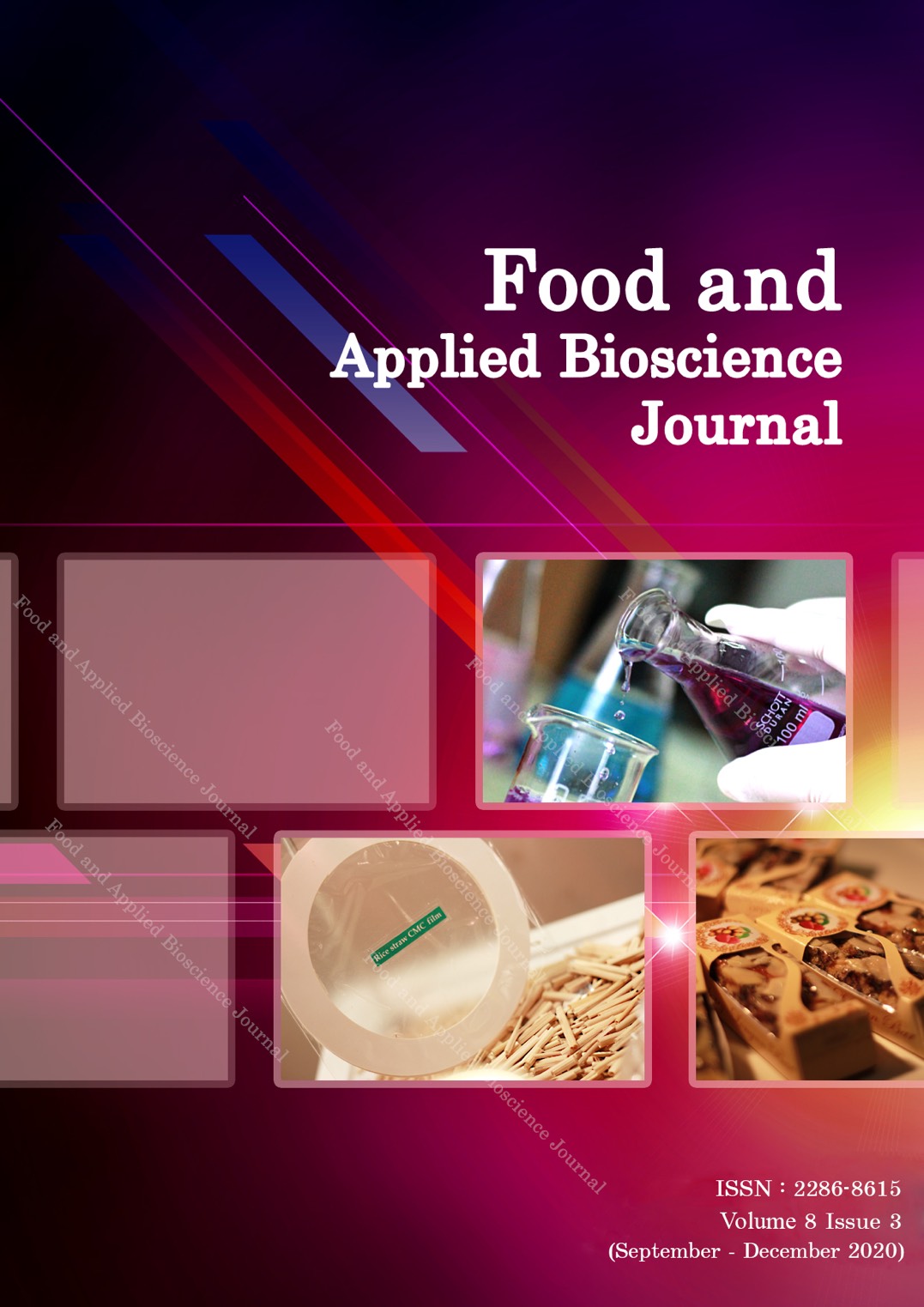The physical, chemical and sensory properties of original and low sodium soy sauces
Keywords:
Flavor, taste, sodium, soy sauce, saltAbstract
Soy sauce is a popular worldwide condiment, especially in Asia. It, however, contains a high content of sodium which leads to an increase in the risks of hypertension and cardiovascular disease. Nowadays, low sodium soy sauce is commercially available for health−conscious consumers; nevertheless,
it is not completely substituting the original one. The objective of this study was to compare the physical, chemical and sensory properties between original and low sodium soy sauces of Japanese and Thai condiments. The results elucidated that low sodium Thai soy sauce had the highest L* value than others
(P≤0.05), while a* and b* were not significantly different among all samples. The lightness value was in accordance with the protein content of soy sauce. The total nitrogen content of low sodium Thai soy sauce was about three times lower than other samples. Low sodium Japanese soy sauce was also lower in protein content than its original recipe (P≤0.05). The flavor profiles of all samples were assessed by descriptive analysis (n = 15) and there were 17 attributes including seven aromas by nose (alcohol, brothy, molasses, beany, malty, fermented, briny), five tastes (salty, umami, sour, sweet, bitter) and five aromas by mouth (brown sugar, autolyzed, beany, briny, fermented). Among all flavor characters, the sourness intensity of low sodium Japanese soy sauce was higher than that of other sauces (P≤0.05). Moreover, the acceptability of four samples was evaluated by a 9−point hedonic test (n = 50). The low sodium Japanese soy sauce was rated lower liking scores in terms of overall, color and aroma (P≤0.05). Just About Right test additionally indicated that at least 60% of consumers perceived too much salty in original Japanese and Thai soy sauces, while the highest percentage frequency distribution of low sodium soy sauces was found to be just right. The manufacturer could use the physical, chemical, and sensory properties information of this study to develop premium quality soy sauce which increases purchase intent. It will be the solution to fulfill consumers’ expectations that the alternative condiment is not only healthy but also scrumptious.






